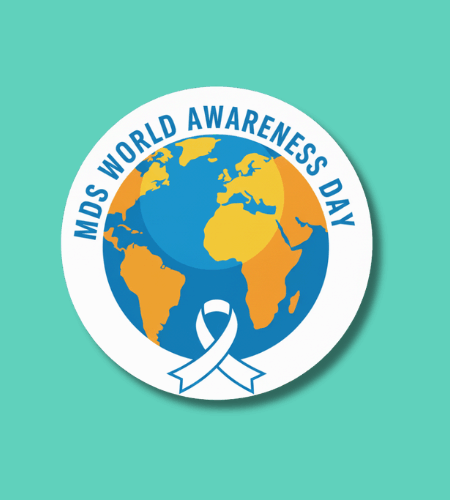MDS World Awareness Day, observed each year on October 25, is a day dedicated to raising global awareness of myelodysplastic syndromes (MDS) — a group of rare blood cancers and bone marrow disorders. 1
Table of Contents
History of MDS World Awareness Day
This awareness day was established by the MDS Alliance, a global network of patient advocacy organizations, with the aim of building recognition, improving diagnosis and care, and spotlighting the challenges faced by patients with MDS.
Over the years, the campaign has grown to include patient stories, social media outreach, resource toolkits, and surveys of patient experience worldwide. It emphasizes the critical need for support services, early detection, and equitable access to treatment for people living with MDS.
Why is MDS World Awareness Day important?
When you think about it, MDS World Awareness Day gives voice to conditions that often fly under the radar. Many people—including some healthcare professionals—may not be familiar with MDS until a diagnosis is made. For those diagnosed, the journey can feel lonely or confusing: symptoms like fatigue, infections, or bleeding may be interpreted in many ways before the correct diagnosis is reached.
The day also invites us to reflect on how rare diseases challenge our health systems, our awareness, and our compassion. By encouraging education, solidarity, and sharing of lived experience, it helps shift MDS from “hidden” to “recognized,” enabling patients and caregivers to connect, support each other, and advocate for better care.
Here are five down‑to‑earth reflections on why this day matters:
- It helps people realize that persistent fatigue, low blood counts, or frequent infections might be more than “just aging” or “just stress” when MDS is in the background.
- It honors the patients, caregivers, and health professionals who carry the burden of managing a rare disease, often with uncertainty and fewer resources.
- It encourages health systems and policymakers to improve diagnosis, referral pathways, and treatment access for MDS.
- It builds community: the more people share their stories, the more likely someone newly diagnosed will feel seen, heard, and supported.
- It reminds us all that rare doesn’t mean invisible—raising awareness can lead to earlier detection, better outcomes, and improved quality of life.
How to Celebrate MDS World Awareness Day
You don’t need an elaborate event to mark this day—simple and sincere actions make a difference. You might share an infographic on social media about MDS, wear a pin or ribbon in recognition, or donate to/support a patient‑advocacy group. If you know someone living with MDS, take the time to listen, ask how you can help, and let them know you see them.
You could also gather friends or colleagues for a short educational moment: invite a specialist to speak about MDS, host a coffee morning fundraiser, or organize a virtual meet‑up of patients/caregivers to share stories. What matters is creating connection, awareness, and support.
Here are five simple ideas you might try:
- Share a short video or infographic about MDS using the hashtags #MDSWAD2024, #United4MDS, or #ThinkMDS.
- Ask your workplace or local community group to display an MDS awareness poster or include a brief mention of the day in their newsletter.
- Reach out to a local blood‑cancer or marrow‑disease support organization and find out how you can volunteer or contribute.
- If you’re a patient or caregiver, write or record your story of living with MDS and how awareness or support would have helped you earlier.
- Have a friendly “wear red” or “go red” moment: many MDS‑support organizations encourage wearing red to symbolize blood health and solidarity.
MDS World Awareness Day Dates Table
| Year | Date | Day |
|---|---|---|
| 2025 | October 25 | Saturday |
| 2026 | October 25 | Sunday |
| 2027 | October 25 | Monday |
| 2028 | October 25 | Wednesday |
| 2029 | October 25 | Thursday |
Subscribe to our newsletter and never miss a holiday again!

